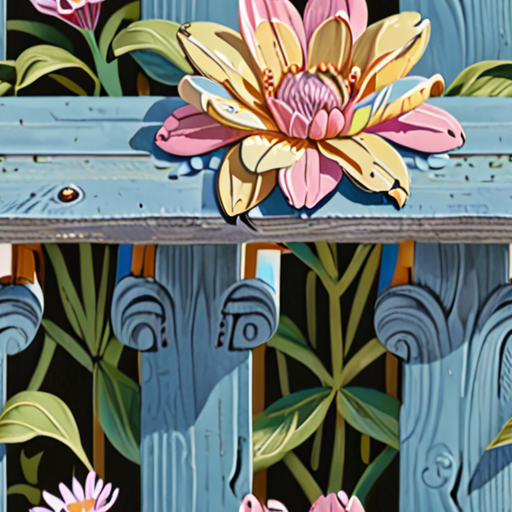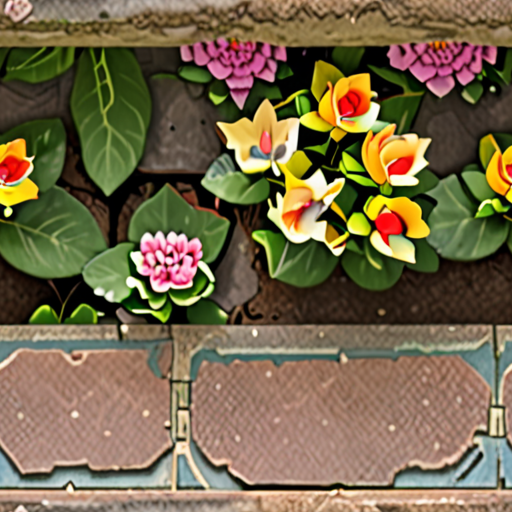As the warmer months approach, many homeowners turn their attention to their outdoor spaces, eager to breathe new life into their worn and weathered furniture. With a little creativity and some expert guidance, even the most tired-looking pieces can be transformed into stunning showpieces that add style and functionality to your patio, deck, or backyard oasis. Whether you’re looking to revamp your entire outdoor furniture collection or simply give a few favorite pieces a fresh new look, there are countless options available to help you achieve the perfect blend of form and function.

Reviving Outdoor Furniture
To keep your outdoor furniture looking its best, regular maintenance is essential.
- Clean the furniture regularly using a mild soap solution and a soft-bristled brush to remove dirt and debris.
- Sand the surface to smooth out rough spots and prepare it for refinishing.
- Apply a coat of outdoor wood oil or varnish to protect the wood from moisture and UV damage.
- Consider applying a waterproof sealant to prevent water from seeping into the wood.
For tougher stains or discoloration, try using a wood cleaner specifically designed for outdoor furniture.
- Mix the cleaner according to the instructions and apply it to the affected area.
- Let it sit for the recommended amount of time before rinsing with warm water.
- Repeat the process if necessary until the stain is removed.
Another option is to refinish the furniture using a high-quality outdoor paint or stain.
- Choose a color that complements your outdoor decor and applies it according to the manufacturer’s instructions.
- Allow the finish to dry completely before applying a second coat.
- Seal the finished surface with a clear coat of polyurethane to protect it from the elements.
Remember to always follow safety precautions when working with chemicals and power tools.
Tips for Specific Types of Furniture
For wicker or rattan furniture, use a gentle cleaning product and avoid using harsh chemicals that can damage the material.
For metal furniture, use a rust-resistant coating to protect it from corrosion.
For plastic furniture, use a mild soap solution and a soft-bristled brush to clean it.
Additional Resources
For more information on how to care for your outdoor furniture, check out our guide to Outdoor Furniture Care Tips .
You can also visit our Outdoor Decor Ideas page for inspiration on how to style your outdoor space.
For a comprehensive guide to outdoor furniture maintenance, see our Outdoor Furniture Maintenance Guide .
Is it Better to Paint or Stain Outdoor Furniture?
When it comes to protecting and beautifying your outdoor furniture, two popular options come to mind: painting and staining.
- Painting
- Staining
Painting Outdoor Furniture
Painting is a great option for outdoor furniture, offering a durable and long-lasting finish that can withstand harsh weather conditions.
-
Advantages:
- Durable and long-lasting finish
- Easily available in various colors and finishes
- Cost-effective compared to staining
-
Disadvantages:
- May require multiple coats for optimal protection
- Can chip or crack over time
- May not be suitable for all types of materials
Staining Outdoor Furniture
Staining is another popular option for outdoor furniture, offering a natural and elegant look that enhances the beauty of the wood.
-
Advantages:
- Natural and elegant appearance
- Protects the wood from moisture and UV damage
- Easy to apply and maintain
-
Disadvantages:
- May not provide adequate protection against extreme weather conditions
- Requires regular maintenance to maintain its appearance
- Can darken or discolor over time
Choosing Between Painting and Staining
The decision between painting and staining ultimately depends on your personal preference, budget, and the type of material your furniture is made of.
- Consider the durability and longevity you need for your furniture
- Think about the aesthetic appeal you want to achieve
- Assess the cost-effectiveness of each option
Tips for Painting and Staining Outdoor Furniture
To get the most out of your painting or staining project, follow these tips:
- Prepare the surface thoroughly before applying paint or stain
- Choose high-quality products specifically designed for outdoor use
- Follow the manufacturer’s instructions carefully
- Apply multiple thin coats for optimal protection and appearance

Reviving Outdoor Wood Furniture
We’ve all been there – our beautifully crafted outdoor wood furniture has seen better days, worn down by harsh weather conditions and years of use.
- Assess the Damage
- Clean the Surface
- Sand Down the Finish
- Apply a New Coat of Stain or Paint
- Add a Protective Sealant
- Maintain Your Masterpiece
Before diving into restoration, inspect your furniture for any signs of damage, rot, or insect infestation. Check for loose joints, cracks, or warping, which may require professional attention.
Start by cleaning the surface of your furniture using a mixture of mild soap and water. Scrub away dirt, grime, and any stubborn stains, then rinse thoroughly and let dry.
Using a fine-grit sandpaper, gently sand down the existing finish to smooth out any rough patches and remove old wax or sealant. Wipe away dust and debris with a tack cloth.
Select a stain or paint that complements your furniture’s original color and style. Apply according to manufacturer instructions, allowing each coat to dry before adding additional layers.
To shield your newly restored furniture from future damage, apply a high-quality sealant specifically designed for outdoor use. Follow application instructions carefully to ensure a durable finish.
To keep your revived outdoor wood furniture looking its best, regularly clean and inspect it, addressing any issues promptly to prevent further deterioration.
By following these steps, you’ll breathe new life into your outdoor wood furniture, extending its lifespan and preserving its beauty for years to come.

Is it Better to Spray Paint or Brush Paint Outdoor Furniture?
Spray painting and brush painting are two popular methods for refinishing outdoor furniture.
- Spray painting is generally faster than brush painting
- Most spray paints are oil-based and provide a more durable finish than latex paint
- Spray paint can be used on practically any surface, including wood, metal, wicker, plastic, and resin
- Spray paint dries much more quickly than brushed-on paint
Considerations for Choosing Between Spray Painting and Brush Painting
When deciding between spray painting and brush painting for outdoor furniture, consider the following factors:
- Type of material: Different materials require different types of paint. For example, wood may require a primer before applying paint, while metal may require a specialized coating.
- Durability: If you want a long-lasting finish, choose a high-quality spray paint that is specifically designed for outdoor use.
- Appearance: Consider the color and finish you want to achieve. Some spray paints have a glossy finish, while others have a matte finish.
- Environmental concerns: Some people prefer to use eco-friendly options, which may limit their choices between spray painting and brush painting.
Benefits of Spray Painting Outdoor Furniture
Spray painting has several benefits when it comes to refinishing outdoor furniture:
- Faster application time: Spray painting is generally quicker than brush painting, making it ideal for large projects or those with limited time.
- Easier cleanup: Spray painting typically requires less cleanup than brush painting, as the paint is applied evenly and doesn’t leave streaks or drips.
- More consistent finish: Spray painting produces a uniform finish, which can be difficult to achieve with brush painting.
Benefits of Brush Painting Outdoor Furniture
Brush painting also has its advantages:
- More control: With brush painting, you have complete control over the application process, allowing for more precision and customization.
- Better adhesion: Brush painting can provide a stronger bond between the paint and the surface, resulting in a longer-lasting finish.
- Cost-effective: Brush painting can be a cost-effective option, especially for small projects or those on a budget.
Final Thoughts
Ultimately, the decision between spray painting and brush painting for outdoor furniture depends on your personal preferences, needs, and goals. Both methods have their advantages and disadvantages, and choosing the right one will depend on the specific project requirements.
Do I Need to Prime Outdoor Furniture Before Painting?
When it comes to giving your outdoor furniture a fresh new look, painting is a great option.
- However, before you start painting, it’s essential to prepare the surface properly.
- This involves cleaning the furniture thoroughly and sanding it down to remove any dirt, grime, or old finishes.
The Importance of Priming
Priming is a crucial step in the painting process, especially when working with outdoor furniture.
- It helps create a strong bond between the paint and the surface, ensuring a smooth and even finish.
- Primer also protects the surface from stains and damage caused by exposure to the elements.
- Additionally, primer can help to cover up any imperfections or discolorations on the surface, resulting in a more uniform appearance.
Choosing the Right Primer
Not all primers are created equal, and choosing the right one for your outdoor furniture is crucial.
- Look for a primer specifically designed for outdoor use, as these products are formulated to withstand harsh weather conditions.
- Masonry primers are ideal for metal and wood surfaces, while latex-based primers work well on plastic and vinyl.
- Consider a water-resistant primer for added protection against moisture and humidity.
Applying the Primer
Once you’ve chosen the right primer, it’s time to apply it to your outdoor furniture.
- Make sure the surface is clean and dry before applying the primer.
- Apply the primer according to the manufacturer’s instructions, usually with a roller or brush.
- Allow the primer to dry completely before painting, following the recommended drying time.
Painting Your Outdoor Furniture
With the primer applied and dried, you’re now ready to paint your outdoor furniture.
- Choose a high-quality exterior paint that’s specifically designed for outdoor use.
- Select a color that complements your outdoor decor and style.
- Apply the paint according to the manufacturer’s instructions, usually with a roller or brush.
Tips and Tricks
To get the best results from your painted outdoor furniture, keep the following tips in mind:
- Always read and follow the manufacturer’s instructions for the primer and paint.
- Test the primer and paint on a small, inconspicuous area first to ensure compatibility.
- Apply thin coats of paint, allowing each coat to dry before adding additional layers.

Should You Put a Clear Coat Over Spray Painted Furniture?
We’ve all been there – you’ve finished painting your furniture, but now you’re left wondering how to protect it from scratches and fading.
- First things first, let’s talk about why you need a clear coat in the first place.
- A clear coat serves as a protective barrier between your paint job and the outside world.
- It helps prevent scratches, fading, and wear and tear, which means your furniture will look great for longer.
The Benefits of Using a Clear Coat
So, what exactly does a clear coat do for your furniture? Here are just a few benefits:
- Protects against scratches and scuffs
- Prevents fading and discoloration
- Helps maintain the appearance of your furniture
- Easy to apply and dry
Choosing the Right Clear Coat
Not all clear coats are created equal, so it’s essential to choose the right one for your needs.
- Look for a clear coat specifically designed for furniture
- Consider the type of paint you used and choose a clear coat that’s compatible
- Read reviews and ask for recommendations from friends or family members who have used clear coats before
Applying a Clear Coat
Now that you’ve chosen the perfect clear coat, it’s time to apply it!
- Clean the surface thoroughly to remove any dust or debris
- Apply a thin layer of clear coat according to the manufacturer’s instructions
- Allow the clear coat to dry completely before handling the furniture
Conclusion
In conclusion, applying a clear coat over spray-painted furniture is a simple yet effective way to protect it from damage and maintain its appearance.
By choosing the right clear coat and following the application instructions, you’ll be able to enjoy your beautifully painted furniture for years to come.

0 Comments